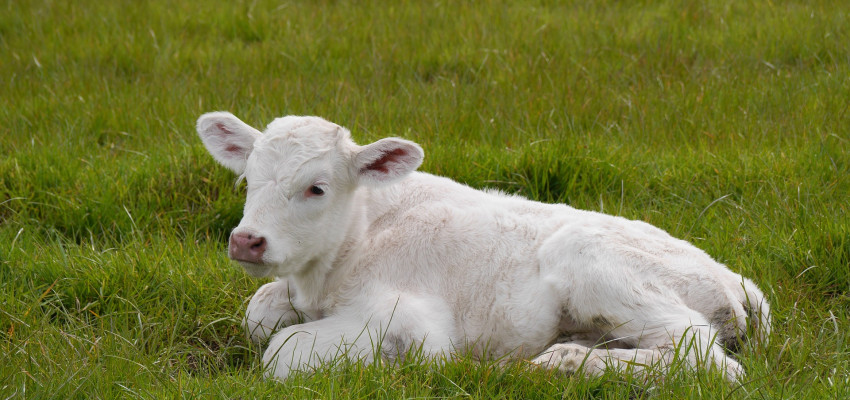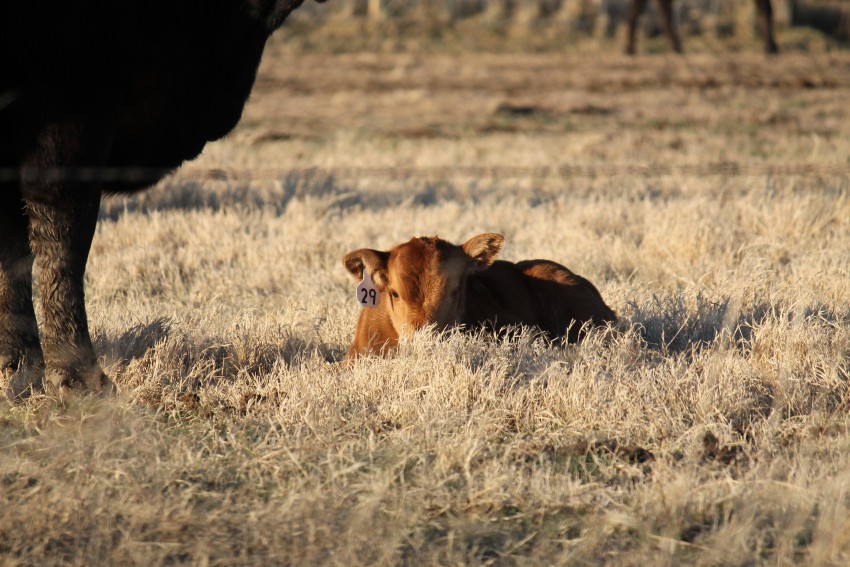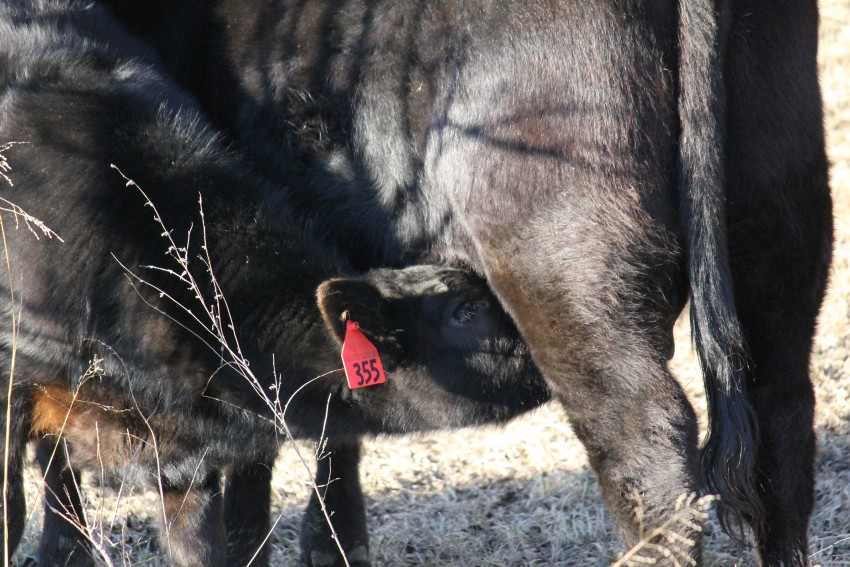By Hannah Becker on March 9, 2017
What happens during calving season?

My favorite time of the year is just around the corner…calving season.
With so much new life (and super cute calves) in the air (and pasture, respectively), springtime on the farm is pure magic. As a rancher, there are few things in life that bring as much satisfaction as watching your healthy herd grow in numbers. A pasture full of bright-eyed calves is the ultimate reward for a year’s worth of hard work.
But calving out a herd isn’t all cute n’ cuddles – it involves a lot of long hours and sweat equity, if you will, to ensure one’s calving season is a success. There’s no cow-friendly birthing suite, complete with professional obstetricians, neonatal nurses and lactation consultants to assist with welcoming the next generation of cattle into the world. Instead, calving season typically takes place with just the farmer, their very pregnant cows, in the middle of rural America.
Here are six frequently asked questions about calving season
Do cows need help delivering their babies?
While birthing an 80-plus pound calf may sound like quite the ordeal to us, Mother Nature has equipped the majority of mature cows to welcome their new ones into this bright new world without any help (or interference). In fact, less than two percent of bovine births require any human assistance. As farmers and ranchers, we try to keep an eye on expecting mothers within our herd, but are careful to only intervene when necessary.
How do cows tell their calf from others in the herd?
The bond developed between cow and calf is quite the phenomenon to observe. While a field of similarly marked calves may render them all “looking the same” to you and me (hence, the ear tags), good momma cows can easily distinguish their calf from others via smell. During the first few hours post-partum, the majority of cows become “acquainted” with their little one through cleaning, nursing, etc. – all activities that help build their bond.
Is it safe for calves to be born outside?
Yes, it’s typically quite safe for calves to be born outside – on clean grass, breathing fresh air, in a quiet space. Most cows will carefully select their birthing spot somewhere within protective earshot of the herd, but providing some semblance of privacy to the mother and offspring. Think: soft and sterile. Surprisingly, well-placed (and timed) outdoor births can pose less of a health risk to newborns than congested indoor birthing arrangements, especially if the barn area is highly trafficked or not properly sterilized between residents.
But what about when it’s cold?
Originally hailing from a much, much milder climate than the great (and super windy) state of Kansas, I was terrified of my calves being born in anything under room temp; but it turns out, 72 degrees Fahrenheit isn’t that comfortable to a cow. While it may sound cold to (some of) us, the ideal outdoor temperature range for most breeds of cattle is actually between 25 and 65 degrees F, and this includes calves. Weather factors farmers keep an eye on during calving season typically include precipitation and wind chill. Warm blankets, wind breaks and heat lamps are all tools we can use to keep chilled newbies warm.
How long do calves stay with their mothers?
While there’s a number of variables influencing the optimal weaning age of calves, most cattle are weaned between the ages of four to eight months. Farmers and ranchers are very careful to provide both cow and calf the resources they need for a healthy and low-stress transition into the next life cycle. Throughout the first few months of life, calves are slowly acclimated to water and roughage while running alongside their mother. This gradual transition allows their rumen – one of the four parts of a bovine stomach – to develop in a manner that can digest more solid food as the calf matures.
Do cows ever have twins?
Yes, twinning can occur in cattle, with the average frequency coming in at between one and seven percent of cows, depending on breed and genetics. While seeing double can be exciting, the arrival of twins often signals extra work for the farmer. Calves born in sets of twins usually arrive one to two weeks earlier and are of lower birth weight (smaller) than their non-twin counter parts. Additionally, due to a milk supply made for one, some farmers have to supplement twinned calves’ milk with additional nutrition sources and keep a close eye on the cow, to ensure her energy needs are met and supported.




